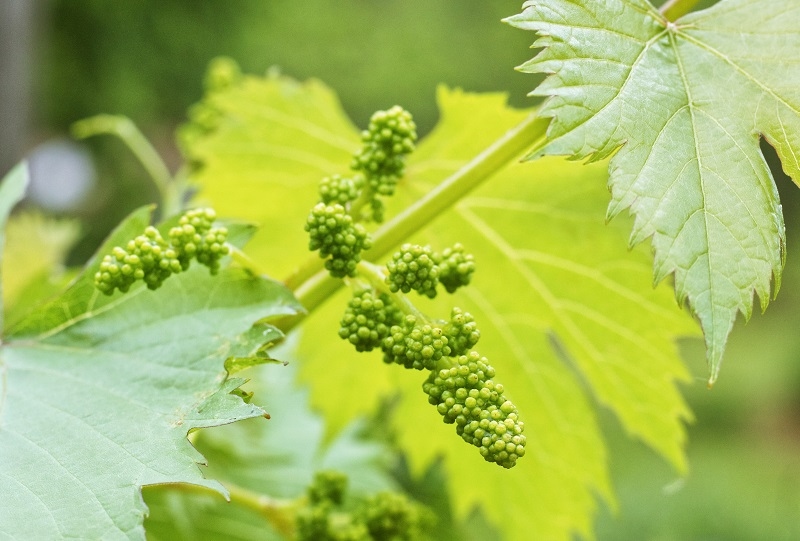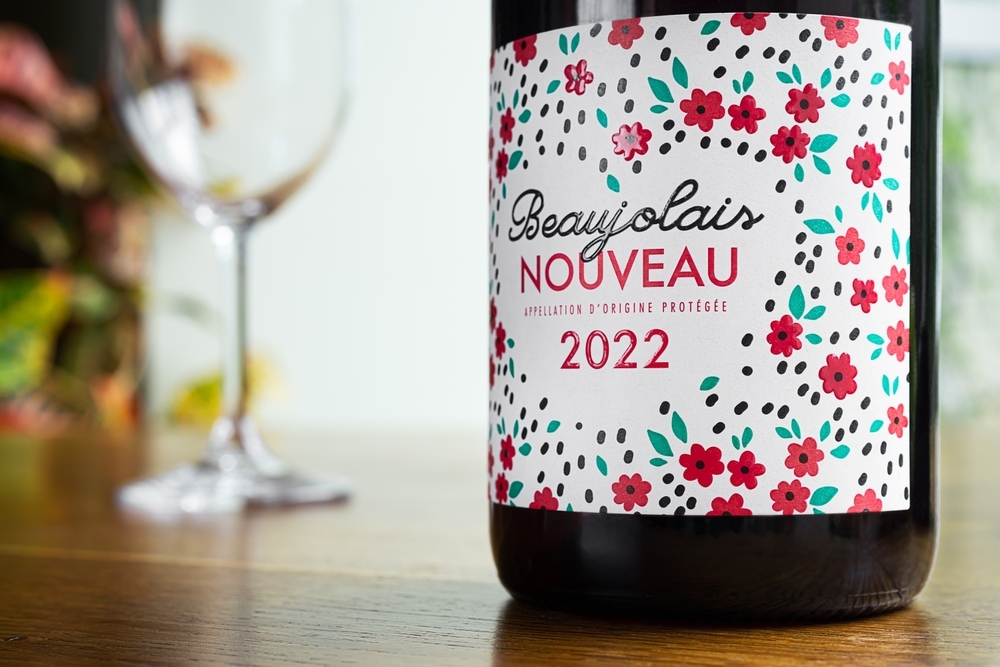Discover the Unique Flavors of the Catawba Wine Grape

When you sip Catawba grape wine, you're not consuming a glass of wine—you're experiencing a rich piece of American winemaking history. The Catawba wine grape is one of the oldest native grape cultivars grown in the United States, with a background as fascinating as its taste. Packed with fruity aromas, crisp acidity, and a touch of floral sweetness, it comes as no surprise that this grape has been a consistent presence in most vineyards and among sweet wine enthusiasts.
Let's journey through the Catawba grape history, learn about its taste, and discover the top Catawba wines USA wineries offer.
The Catawba Grape History: A Treasure
The Catawba grape history is intimately entwined in the context of American wine. Believed to be a cross between American and European grapes, the Catawba grape became popular during the early 1800s. Its earliest known cultivation was by John Adlum in the Washington D.C. region, but it was Nicholas Longworth in Ohio who fully realized its potential. Longworth's effervescent Catawba wines earned international acclaim during the 1850s, and Cincinnati soon earned the reputation as the "Sparkling Wine Capital" of the United States.
The capacity of this grape to succeed in the Eastern and Midwestern climes contributed significantly to its swift proliferation. It was a prime factor in creating the nation's initial wine industry. Though Catawba wine grape popularity declined for drier European varieties, a resurgence in the last few years has occurred with the renaissance of interest in its singular character.
The Signature Catawba Grape Flavor Profile
One of the Catawba grape wine's major selling points is its taste. Catawba grape tastes are wonderfully expressive—look for a burst of strawberry, melon, and candied fruit flavors with undertones of grape jelly and a clean, dry finish. Many describe its flavor as "foxy," a description used to characterize the musky scent of native American grapes.
Depending on how and where it's produced, Catawba wine can be semi-dry or sweet. It's commonly consumed as a light pink or blush wine. Winemakers also employ it in making rosé and sparkling styles, each highlighting one of the many aspects of this grape's dynamic taste.
A normal Catawba wine tasting experience features zesty acidity, mild sweetness, and a saliva-producing rush of red berry flavors. The aromatic fragrance is typically floral, with honeysuckle and lilac hints adding depth. The ratio of sugar to acid also makes it extremely food-friendly.
Don’t Miss This: The Surprising Health Benefits of Red Wine You Need to Know
What Makes Catawba Wine Grape So Sought After
The Catawba wine grape is adaptable, hardy, and well-suited to cool, damp climates. Its thick skin resists rot and pests, which is why it thrived in such areas as Ohio, Pennsylvania, and North Carolina in the 19th century.
Today, vineyards still welcome the grape not just for its heritage but for its capacity to create wines that are easy to drink and appealing to everyone. Whether chilled over a summer afternoon or opened for a special occasion, Catawba grape wine bursts with brightness in each glass.
Its flexibility in winemaking—from still to sparkling, dry to sweet—means everyone will find a Catawba wine flavor that suits them. The grape provides winemakers with an artist's freedom. To those who drink it, it presents the richness and complexity of the varietal grown in the USA.
Where to Find the Best Catawba Wines USA Offers
If you’re looking for the best Catawba wines USA wineries offer, you’ll want to head to regions where the grape has been cultivated for generations. Ohio remains a stronghold, with Lake Erie’s temperate climate continuing to nurture vineyards producing vibrant and aromatic Catawba wines.
You'll also discover iconic expressions in New York's Finger Lakes, Pennsylvania's Lake Erie AVA, and northern North Carolina. Each region imbues its own character onto the grape, translating into subtle differences in flavor and aroma. If you like something dry and crisp or sweet and floral, there's a bottle waiting for you.

A few standout producers are:
Johnson Estate Winery (New York) – Famous for a crisp, berry-forward style with clean finishes.
St. Julian Winery (Michigan) – Produces both sparkling and still styles with tropical and jammy flavors.
Narcisi Winery (Pennsylvania) – Famous for semi-sweet blush styles with outstanding balance.
Gideon Owen Wine Company (Ohio) – Historic winery famous for picturesque vineyards and fizzy wines.
These producers have worked to restore the image of Catawba grape wine and keep pushing the boundaries with their products.
Ideal Catawba Wine Pairings for Any Event
Due to its medium body and aromatic nature, Catawba wine pairings can be surprisingly varied. The natural sweetness and acidity of the wine make it a great match for many different foods.
Here are some ideas:
Spicy dishes – The cooling sweetness of Catawba wine balances the heat in Thai, Indian, or Cajun cuisine.
Seafood – Consider grilled shrimp, seared scallops, or baked salmon. The wine adds depth without dominating the flavors.
Cheese platters – Mild cheeses such as mozzarella, brie, and havarti cut the fruit-forward quality of the wine.
Grilled meats – Pork chops and barbecued chicken pair well with the smoky-sweet balance of Catawba grape flavor.
Desserts made from fruit – Peach cobblers, strawberry tarts, and citrus sorbets glow with the berry flavors of the wine.
These Catawba wine combinations highlight the grape's versatility and provide new options for enjoying it casually.
The Best Catawba Wineries to Visit
Are you keen to experience the origins of this grape yourself? Visiting Catawba wineries is one of the best ways to appreciate this varietal in depth. Most Catawba wineries not only provide tastings but also unforgettable experiences, from vineyard tours to pairings of wine and food.
Some of Catawba's finest wineries are:
Gideon Owen Wine Company (OH) – Historic estate where Catawba sparkling wines can be savored within 150-year-old cellars.
Lake James Cellars (NC) – A family-owned vineyard famous for its laid-back environment and fruit-forward wines.
South Creek Winery (NC) – Provides stunning vistas of the Blue Ridge Mountains and award-winning blush wines.
St. Julian Winery (MI) – Michigan's oldest winery, boasting a gigantic fan following and several tasting rooms in the state.
These wineries cherish the long-standing popularity of the Catawba wine grape and continue its legacy for generations to come.
Why You Should Be Drinking More Catawba Grape Wine
In an age becoming more and more fixated on big reds and oaky whites, Catawba grape wine provides something deceptively different. It's lively, down-to-earth, and rich in heritage. Every glass has a sense of nostalgia, reminding one of easier days when American wine production was just starting to flourish.
Whether you’re a wine novice or a seasoned collector, adding a few bottles of Catawba wine to your cellar is a must. Its wide appeal, historical significance, and flavor versatility make it a grape worth celebrating.
Worth A Look: Wine Tourism List For World’s Best Vineyards for Wine Lovers
Conclusion
The Catawba wine grape had an illustrious history of being a 19th-century fad and a 21st-century renaissance. With its sweet perfume aroma and flamboyant pink color, the Catawba grape first charmed American wine drinkers and lives on as a charming varietal today. It slowly lost out to other grape types. Yet, the old-fashioned characteristics that make the Catawba unique won a new generation of wine lovers curious for something different, something with heritage. With this flamboyant personality, this grape gives an equally breathtaking experience that keeps surprising all who come into contact with it.
The Catawba grape today is a veritable testament to American winemaking's passion and driven brilliance. It is a journey through time and taste, from unearthing the rich tapestry of Catawba grape history to savoring its delicate flavour nuances and tasting some of the best offerings of Catawba wine that the USA has to offer. Be it dry rose, sparkler, or dessert pour, the history and versatility of Catawba make it a mandatory taste for true wine lovers and armchair adventurers alike.
This content was created by AI
No keywords available



